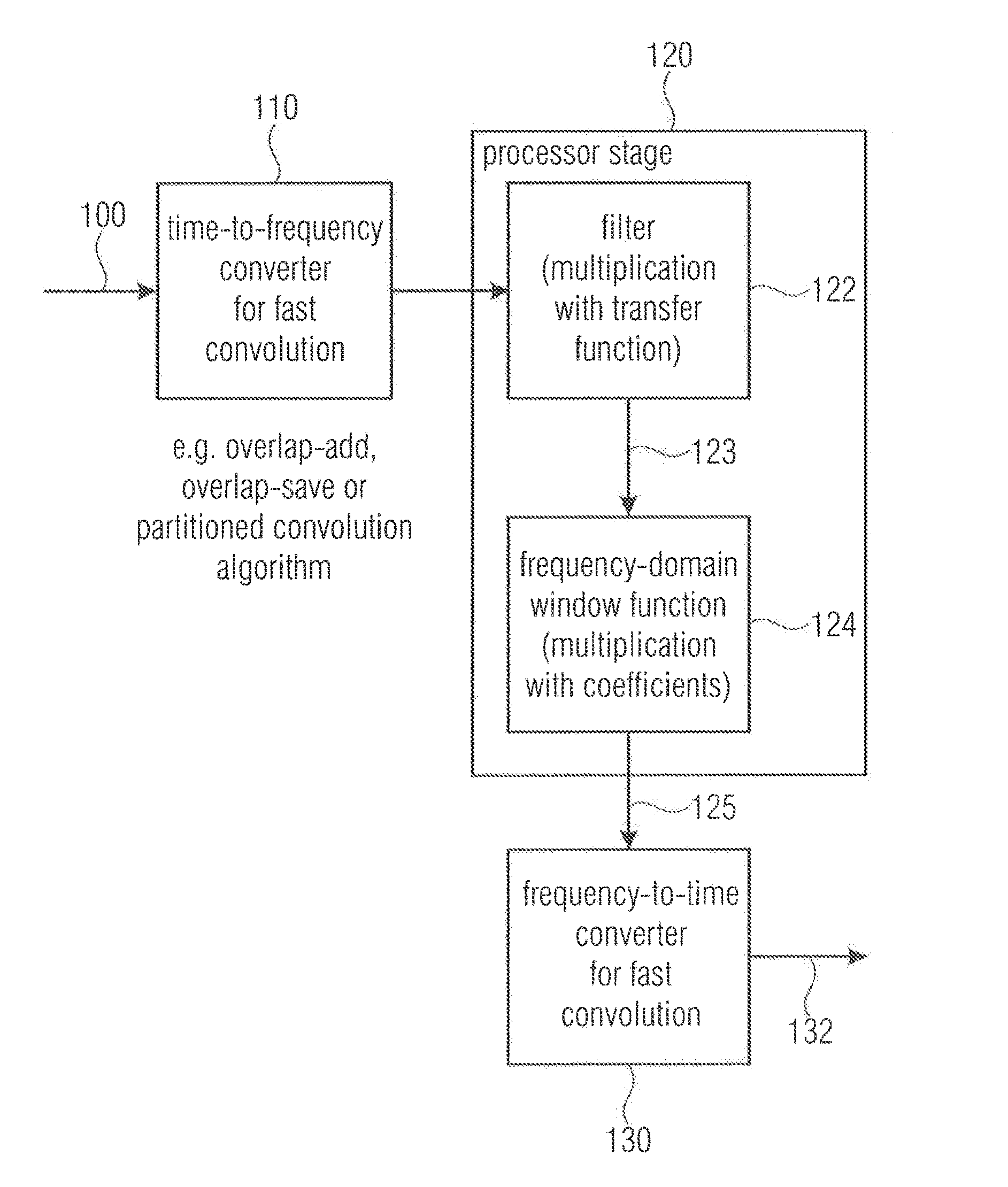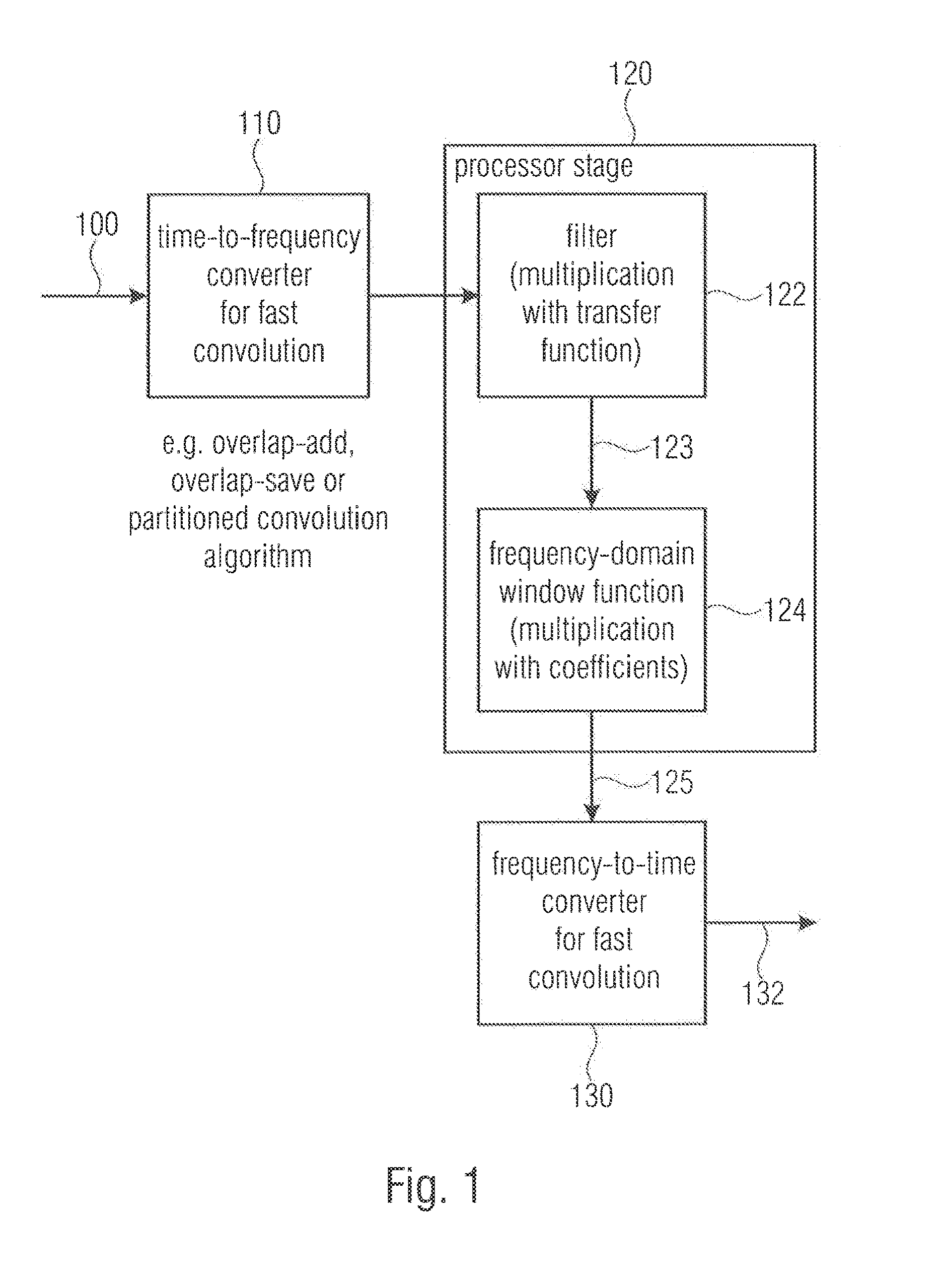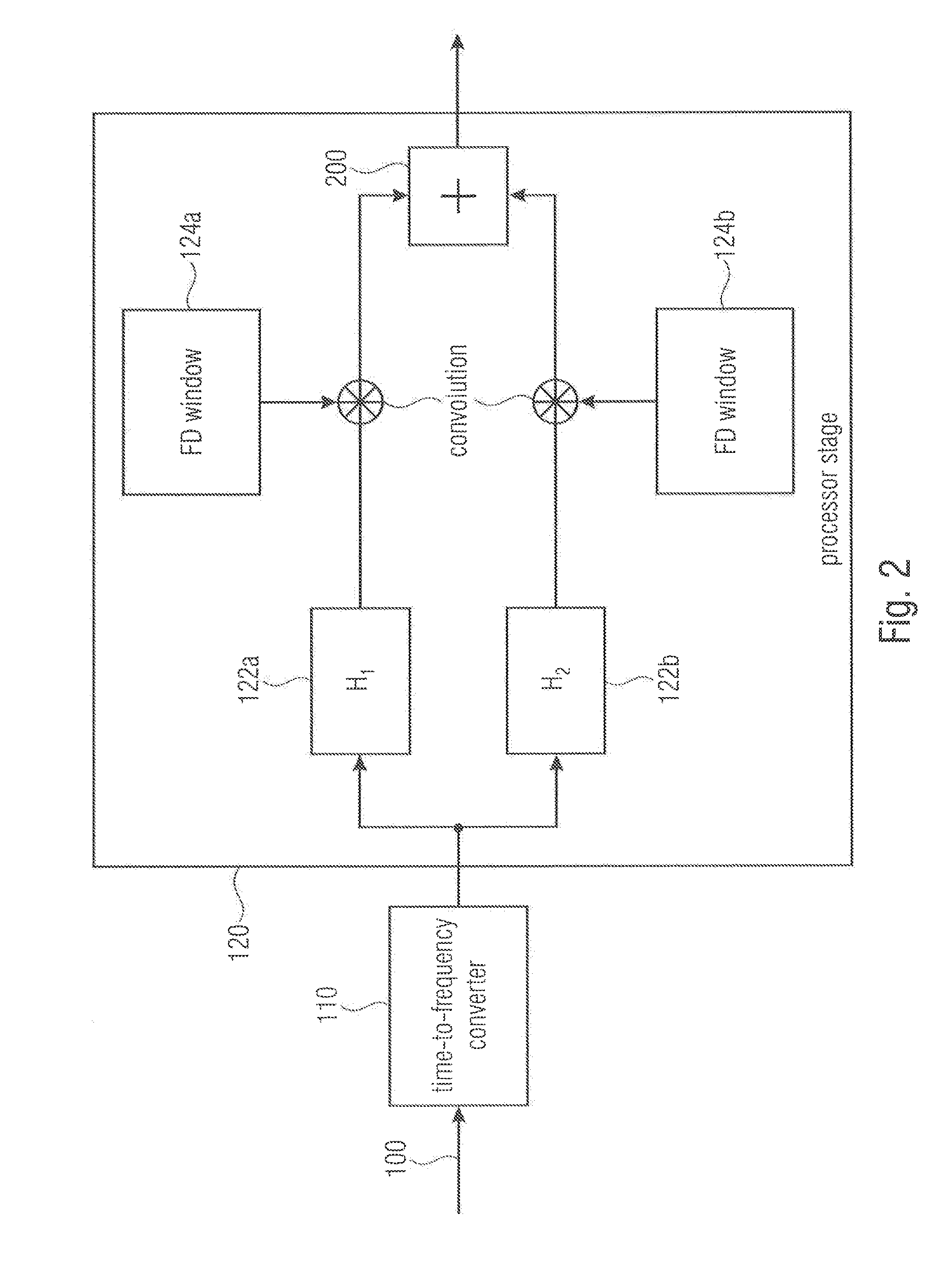Device and method for processing a signal in the frequency domain
a frequency domain and signal technology, applied in the field of audio signals, can solve the problems of increasing computing burden, difficult to combine with gradual filter crossfading, and high latencies of filtering, and achieve the effect of increasing efficiency
- Summary
- Abstract
- Description
- Claims
- Application Information
AI Technical Summary
Benefits of technology
Problems solved by technology
Method used
Image
Examples
Embodiment Construction
[0038]FIG. 1 shows a device for processing a discrete-time signal in the frequency domain. An input signal 100 which is present in the time domain is fed to a time-to-frequency converter 110. The output signal of the time-to-frequency converter 110 is then fed to a processor stage 120 which comprises a filter 122 and frequency-domain window function providing means 124. The output signal 123 of the frequency-domain window function providing means 124 may then be fed, either directly or after processing, such as, for example, a combination with other correspondingly, equally processed signals, to frequency-time transform means or frequency-time converter 130. In an embodiment of the present invention, the time-to-frequency converter 110 and the frequency-time converter 130 are designed for fast convolution. A fast convolution may, for example, be an overlap-add convolution algorithm, an overlap-save convolution algorithm or any partitioned convolution algorithm. Such a partitioned co...
PUM
 Login to View More
Login to View More Abstract
Description
Claims
Application Information
 Login to View More
Login to View More - R&D
- Intellectual Property
- Life Sciences
- Materials
- Tech Scout
- Unparalleled Data Quality
- Higher Quality Content
- 60% Fewer Hallucinations
Browse by: Latest US Patents, China's latest patents, Technical Efficacy Thesaurus, Application Domain, Technology Topic, Popular Technical Reports.
© 2025 PatSnap. All rights reserved.Legal|Privacy policy|Modern Slavery Act Transparency Statement|Sitemap|About US| Contact US: help@patsnap.com



